Discover the enchanting world of Star Jasmine Flowers. Learn about 10 beautiful varieties, their care requirements, and how to incorporate them into your landscape. Transform your garden with these fragrant blooms!
Star jasmine is a popular flowering plant that can add beauty and fragrance to any garden. If you’re looking to spruce up your outdoor space, these lovely climbers might be just what you need. In this article, we’ll explore 10 stunning star jasmine varieties that you can grow in your garden. We’ll also cover how to care for them and some creative ways to use them in your landscape.
Here’s the information about Star Jasmine flowers in an easy-to-understand chart format:
| Aspect | Details |
|---|---|
| Botanical Name | Trachelospermum jasminoides |
| Common Name | Star Jasmine, Confederate Jasmine |
| Plant Zone | Zones 8-11 |
| Sun Exposure | Full sun to part shade |
| Soil Type | Well-drained, loamy soil |
| Watering Needs | Regular; keep soil consistently moist but not waterlogged |
| Growth Habit | Evergreen, vining or shrubby |
| Height/Spread | 3-6 feet tall as a shrub; up to 20 feet as a vine |
| Bloom Time | Late spring to summer |
| Flower Color | White |
| Special Features | Highly fragrant, star-shaped flowers; glossy, dark green leaves; can be used as ground cover, in containers, or trained to climb trellises and walls; attracts pollinators |
1. Common Star Jasmine
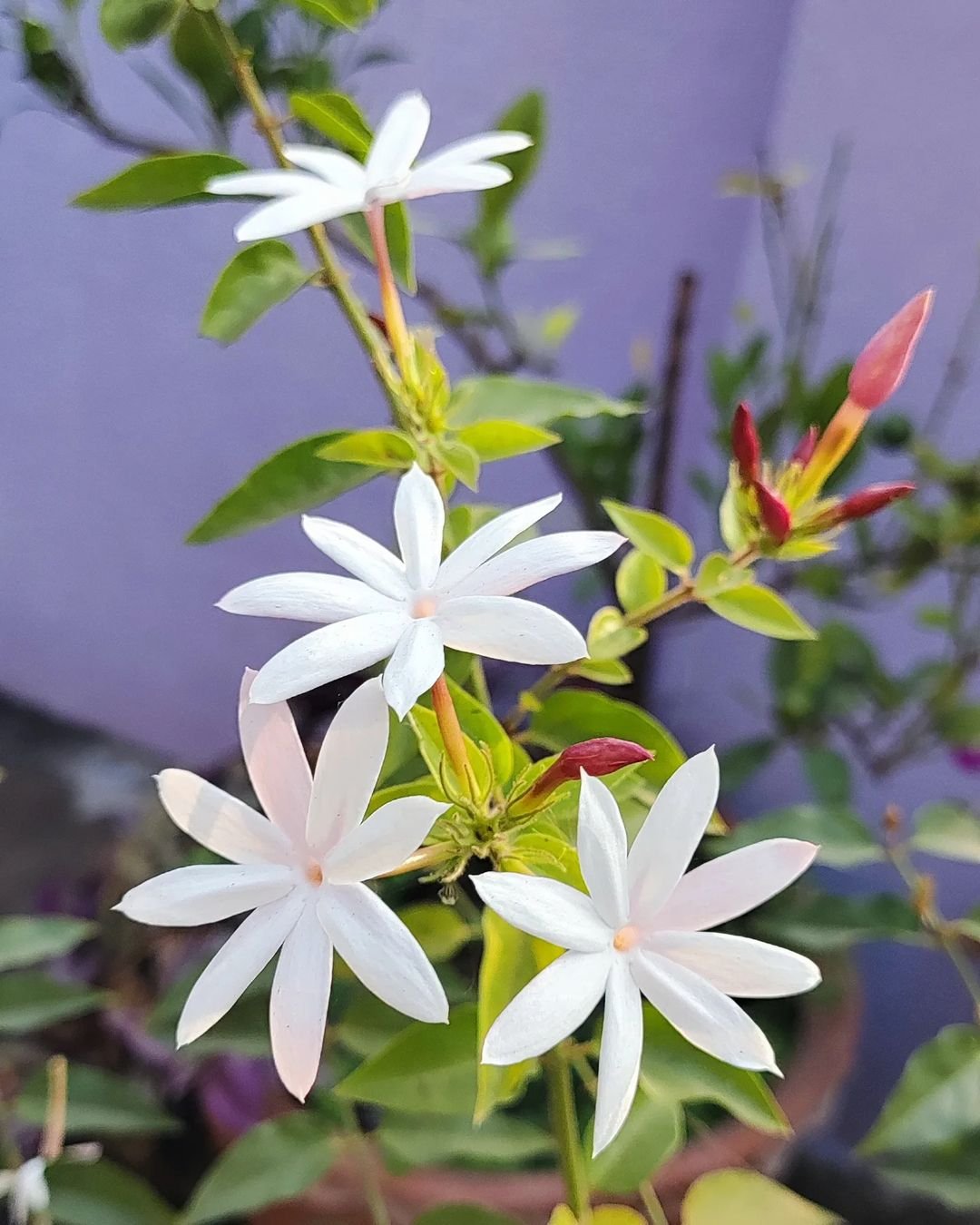
Common star jasmine is probably the most well-known variety. It’s loved for its clusters of white, star-shaped flowers that smell amazing. This plant is great for covering walls, fences, or trellises.
Growing tips
- Likes full sun to partial shade
- Grows well in zones 8-10
- Water regularly, but don’t overwater
- Prune after flowering to keep it in shape
Learn more about growing star jasmine from the University of Florida Extension.
2. Pink Star Jasmine
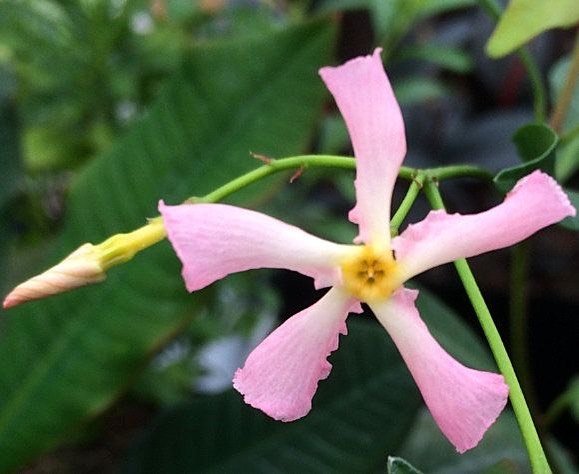
If you want something a little different, try pink star jasmine. It’s similar to the common variety, but with light pink flowers that fade to white as they age.
Growing tips
- Needs the same care as common star jasmine
- Great for adding a splash of color to your garden
- Attracts butterflies and hummingbirds
3. Variegated Star Jasmine
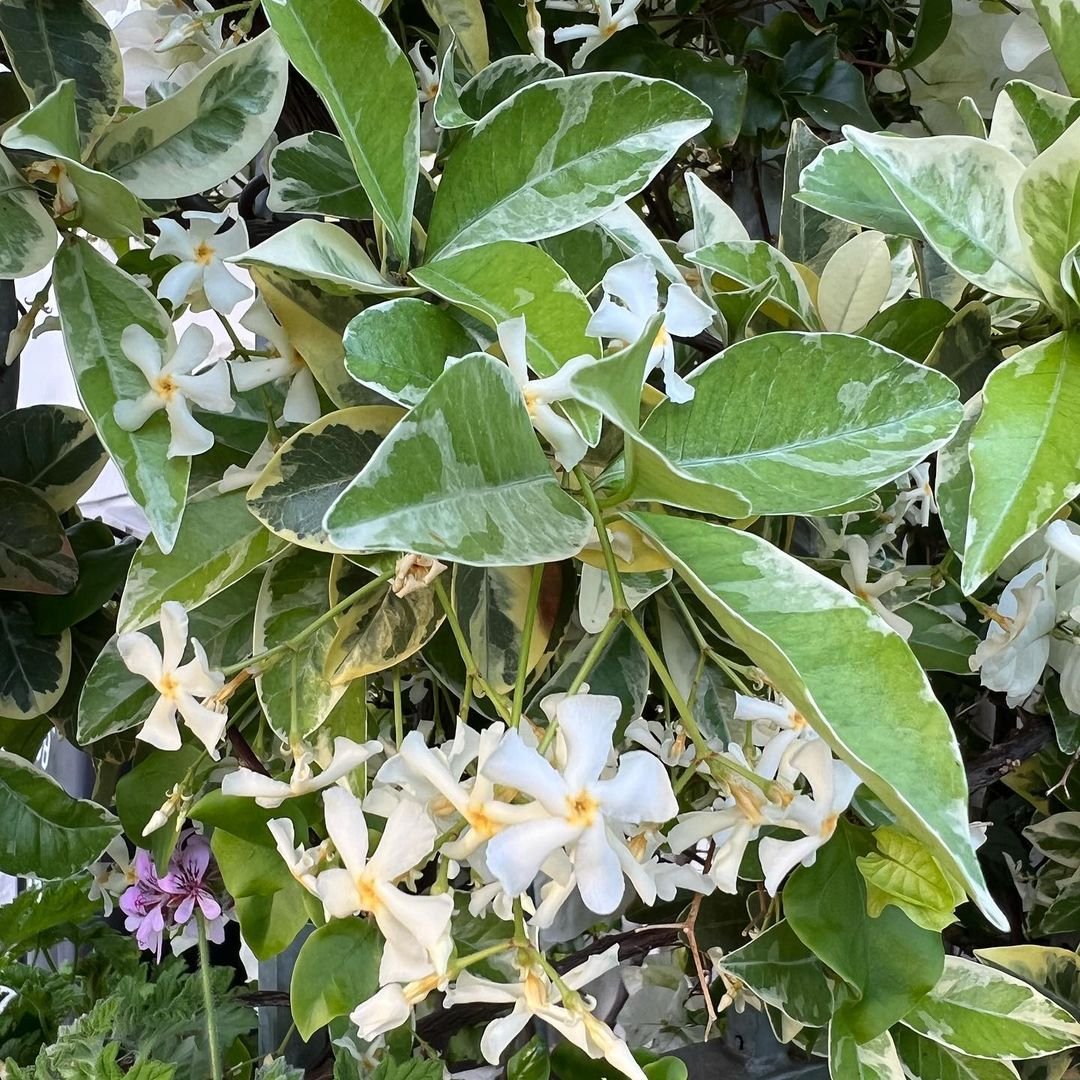
Variegated Star Jasmine variety has leaves with white or cream edges, making it stand out even when it’s not flowering. The flowers are white, just like the common star jasmine.
Growing tips
- Prefers partial shade to protect its variegated leaves
- Grows a bit slower than other varieties
- Great for brightening up shady areas
4. Chinese Star Jasmine
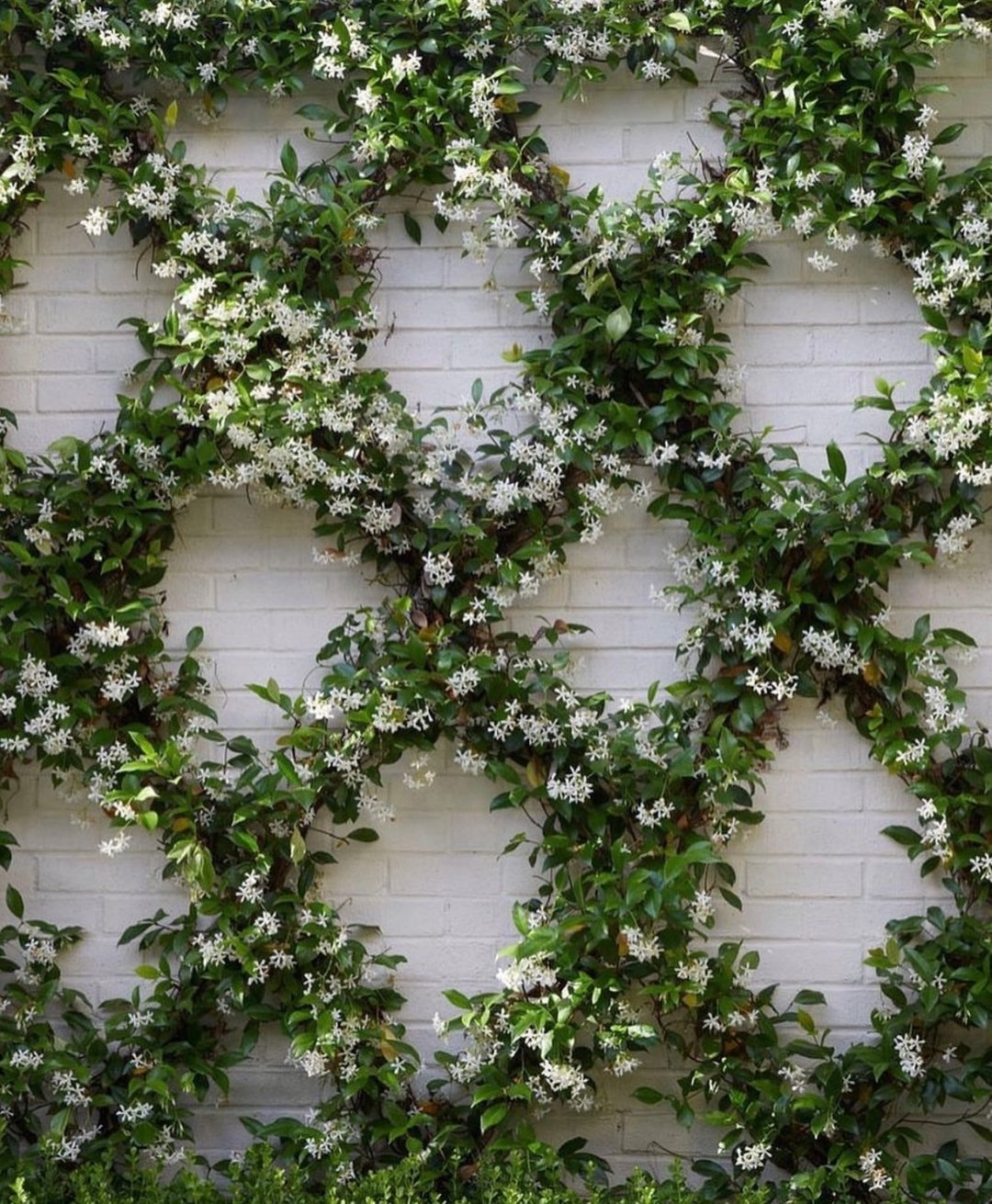
Chinese star jasmine is a compact variety that’s perfect for small gardens or containers. It has smaller leaves and flowers than the common variety.
Growing tips
- Ideal for small spaces or container gardens
- Can be grown as a ground cover or trained to climb
- Needs regular pruning to keep its compact shape
5. Primrose Jasmine
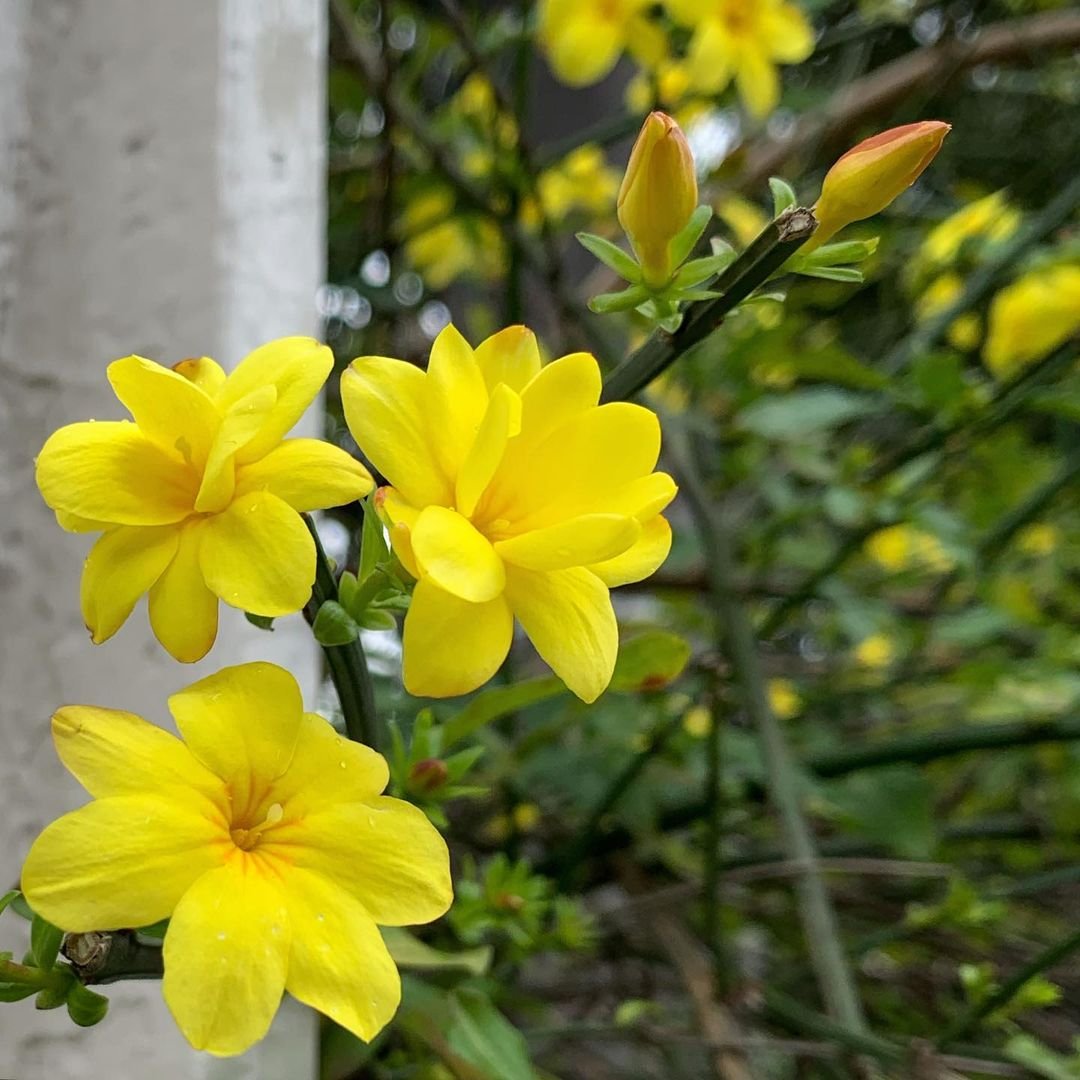
Primrose jasmine isn’t a true star jasmine, but it’s often grouped with them. It has bright yellow flowers and can be grown as a shrub or climber.
Growing tips
- Tolerates drought once established
- Blooms in late winter or early spring
- Can become invasive in some areas, so check local guidelines
The California Invasive Plant Council provides information on managing primrose jasmine responsibly.
6. Confederate Jasmine
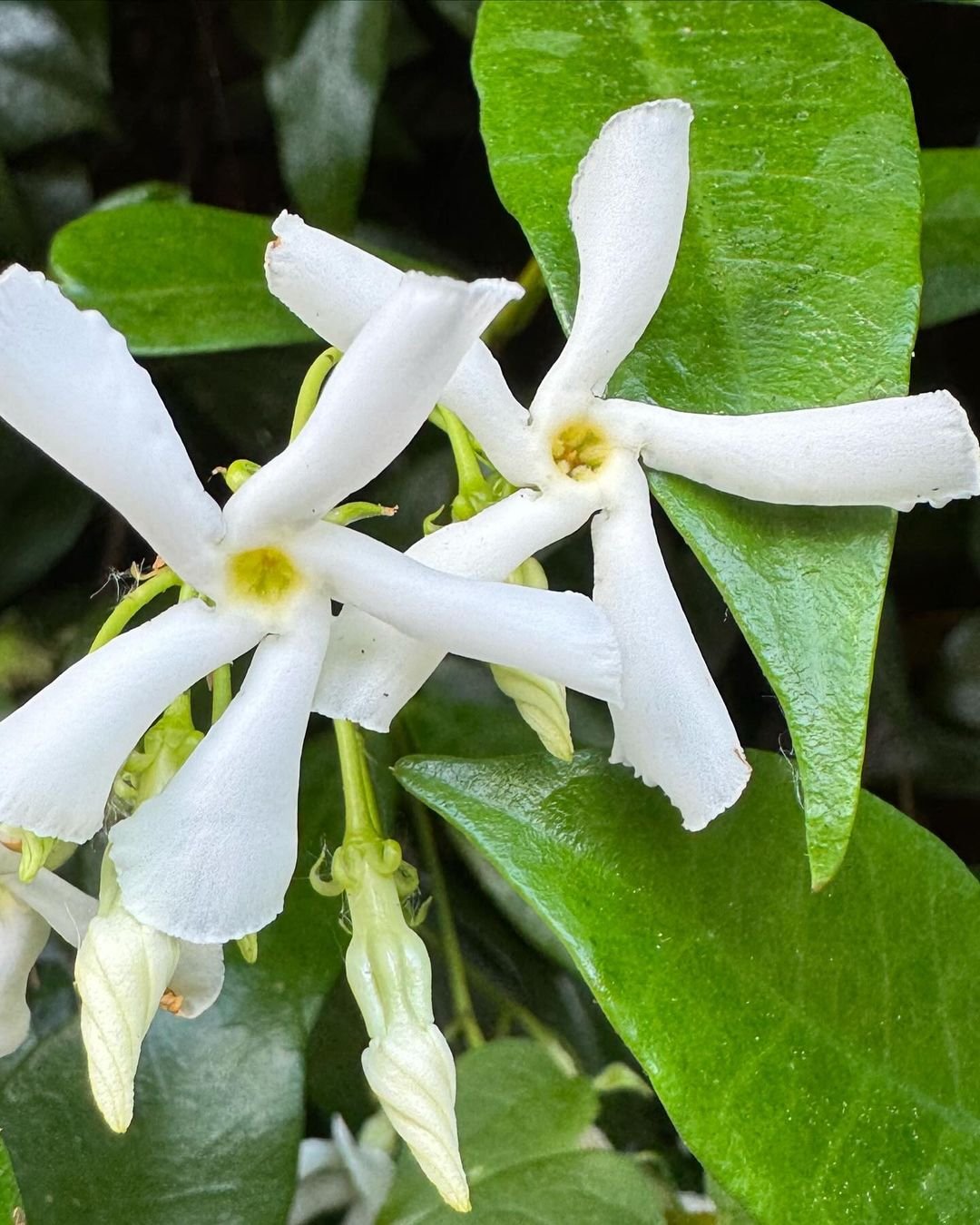
Confederate Jasmine variety is very similar to common star jasmine but is known for being especially fragrant. It’s a popular choice for Southern gardens.
Growing tips
- Very fragrant, especially in the evening
- Grows quickly and can cover large areas
- Great for creating privacy screens
7. Asiatic Jasmine
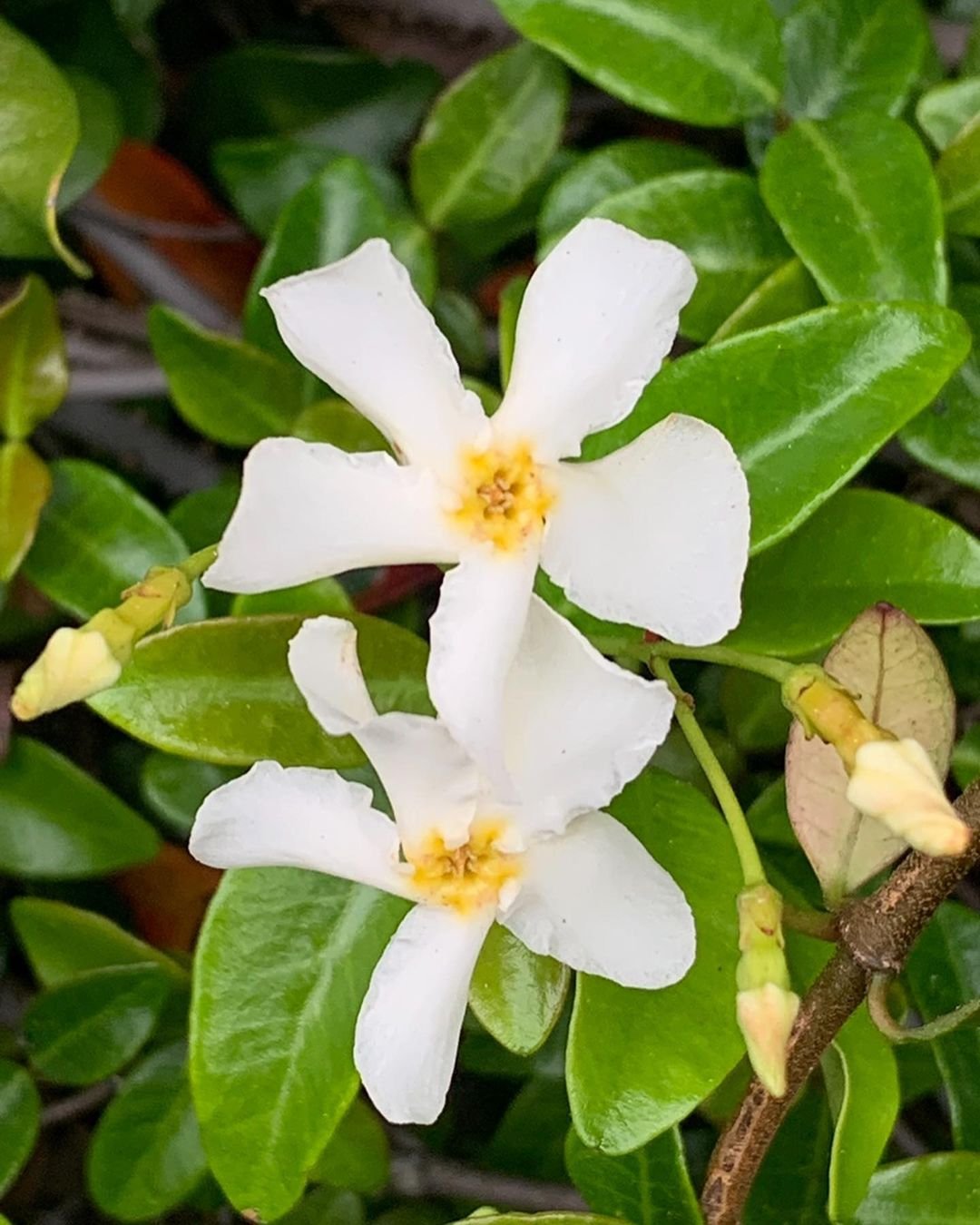
Asiatic jasmine is often used as a ground cover. It has smaller leaves and flowers than other star jasmines and spreads quickly.
Growing tips
- Excellent for erosion control on slopes
- Can tolerate foot traffic once established
- May need regular trimming to prevent spreading
8. Winter Jasmine
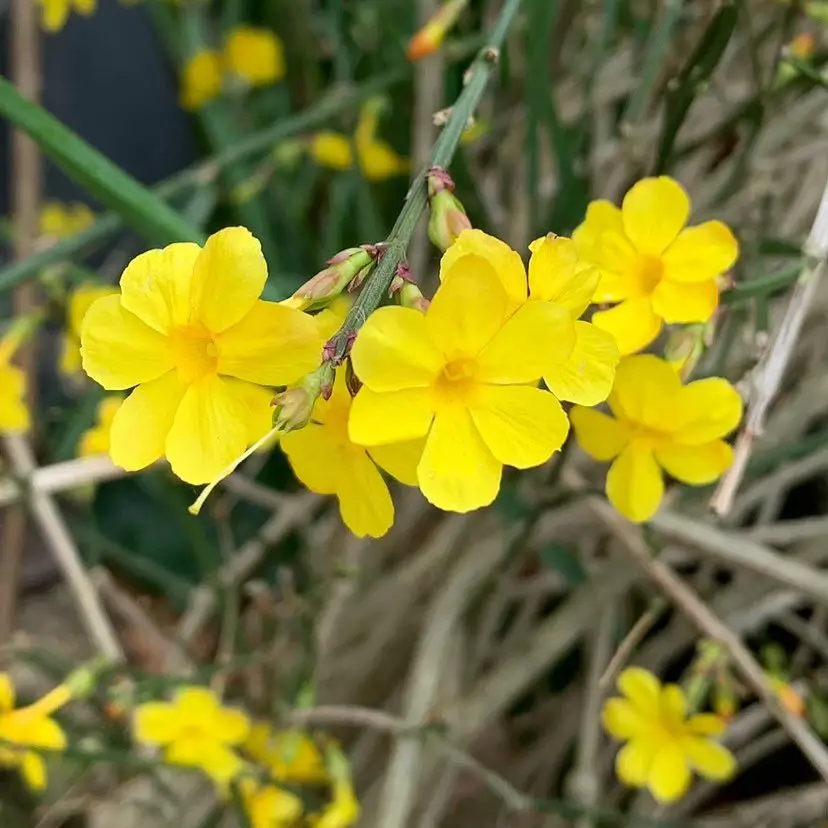
Winter jasmine isn’t a true star jasmine, but it’s a great option for colder climates. It blooms in winter with yellow flowers on bare stems.
Growing tips
- Hardy in zones 6-10
- Blooms when most other plants are dormant
- Can be trained as a climber or left as a shrub
Learn more about winter jasmine from the Missouri Botanical Garden.
9. Italian Jasmine
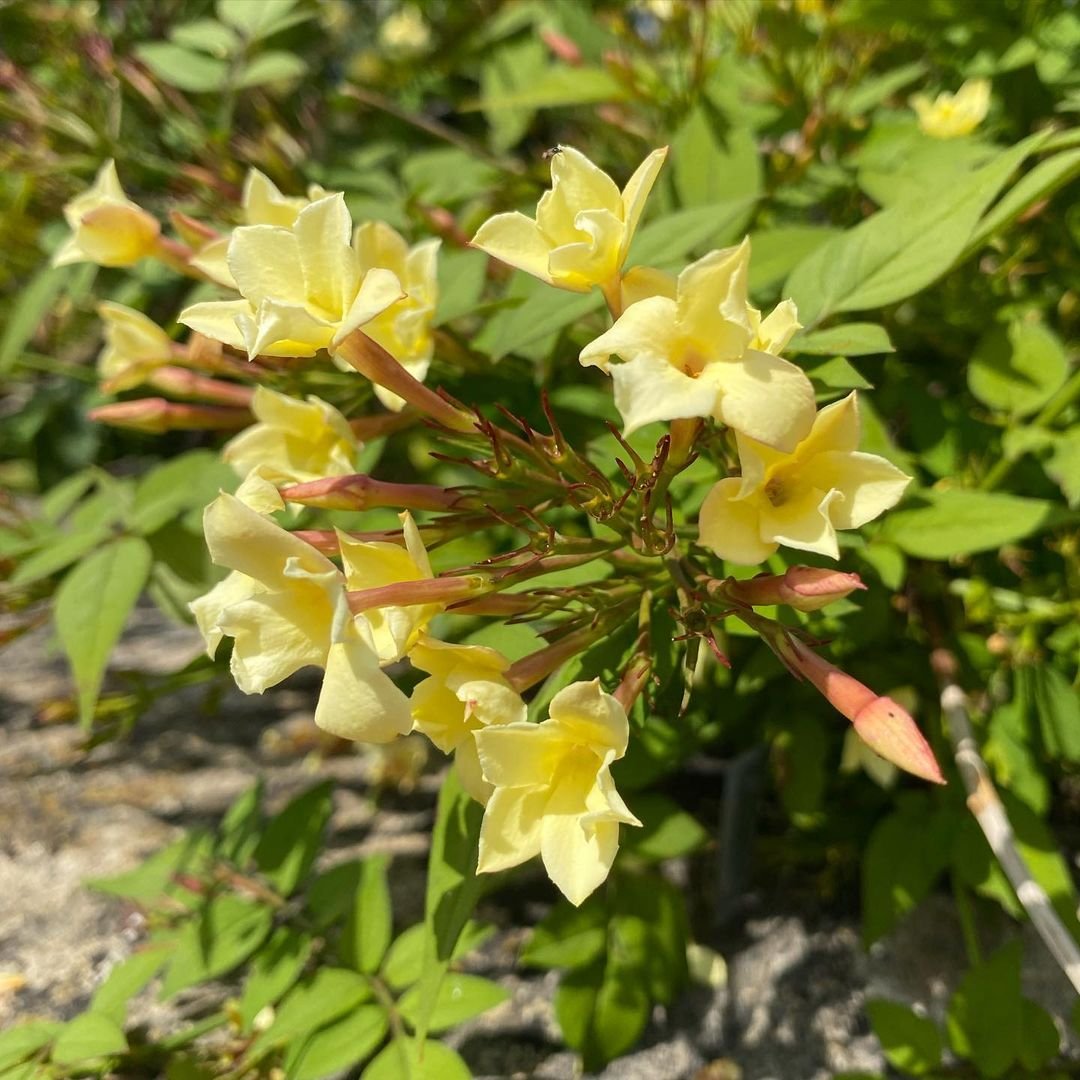
Italian jasmine is a shrubby plant with yellow flowers. It’s not a true star jasmine but is often used similarly in gardens.
Growing tips
- Tolerates drought and poor soil
- Can be grown as a hedge or trained to climb
- Prune after flowering to maintain shape
10. Angel Wing Jasmine
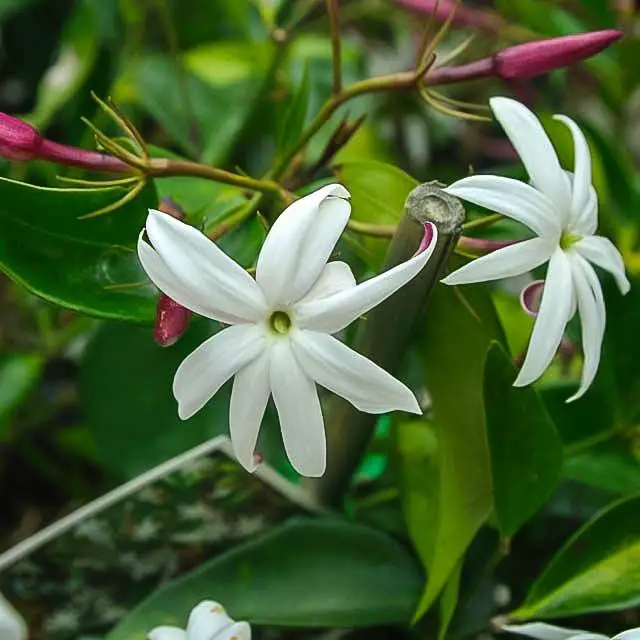
Angel wing jasmine gets its name from its unique flower shape. The white flowers have a purple tinge on the back of the petals.
Growing tips
- Needs protection from strong winds
- Prefers warm climates (zones 9-11)
- Great for pergolas or arbors
Caring for Star Jasmine
While each variety has its own specific needs, here are some general care tips for star jasmine:
Soil
Star jasmines prefer well-draining soil. If your soil is heavy clay, consider adding some compost or sand to improve drainage.
Watering
Most star jasmines need regular watering, especially when they’re young. Once established, they’re fairly drought-tolerant.
Fertilizer
Feed your star jasmine with a balanced, slow-release fertilizer in spring.
Pruning
Prune after flowering to maintain shape and encourage bushier growth.
Pests and Diseases
Star jasmines are generally resistant to pests and diseases. However, they can sometimes be affected by scale insects or root rot if overwatered.
For more detailed care instructions, check out this guide from the University of California Agriculture and Natural Resources.
Creative Ways to Use Star Jasmine in Your Garden
- As a fragrant entry: Plant star jasmine near your front door for a welcoming scent.
- Privacy screen: Train star jasmine on a trellis or fence for a beautiful, fragrant privacy screen.
- Ground cover: Use low-growing varieties like Asiatic jasmine as a living mulch under trees.
- Container plant: Grow compact varieties in pots on your patio or balcony.
- Arbor or pergola cover: Let star jasmine climb over an arbor or pergola for a romantic garden feature.
- Living wall: Create a vertical garden by training star jasmine on a wall-mounted trellis.
- Topiary: With regular pruning, you can shape some star jasmine varieties into topiaries.
- Hanging baskets: Trailing varieties look beautiful spilling over the sides of hanging baskets.
Frequently Asked Questions
Q: How fast does star jasmine grow?
A: Growth rate varies by variety, but most star jasmines grow about 1-2 feet per year.
Q: Is star jasmine invasive?
A: Some varieties can be invasive in certain regions. Always check with your local extension office before planting.
Q: Can I grow star jasmine indoors?
A: While star jasmine prefers to be outdoors, you can grow it indoors in a bright, sunny spot. It may not flower as profusely indoors.
Q: How do I propagate star jasmine?
A: Star jasmine can be propagated from cuttings. Take 6-inch cuttings in summer, remove the lower leaves, dip in rooting hormone, and plant in a pot with well-draining soil.
Q: Are star jasmines poisonous to pets?
A: According to the ASPCA, star jasmine is non-toxic to cats and dogs.
Star jasmine varieties offer a world of possibilities for your garden. Whether you’re looking for a fragrant climber, a colorful ground cover, or a unique container plant, there’s a star jasmine variety that fits the bill. By understanding the needs of each variety and getting creative with how you use them, you can transform your outdoor space into a fragrant, beautiful oasis.
Remember, while star jasmines are generally easy to care for, they do best when their basic needs are met. Pay attention to your plant’s specific requirements for sunlight, water, and soil, and don’t be afraid to prune regularly to keep your star jasmine looking its best.
With proper care and a little patience, your star jasmine will reward you with lush foliage and fragrant blooms for years to come. Happy gardening!
For more gardening tips and plant care guides, visit usagardenhub.com.


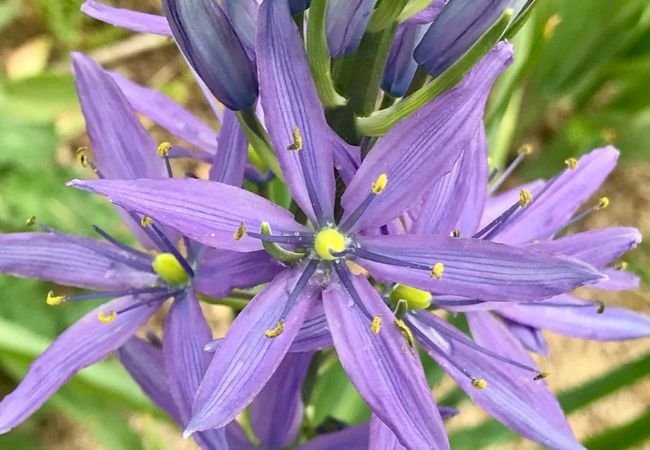
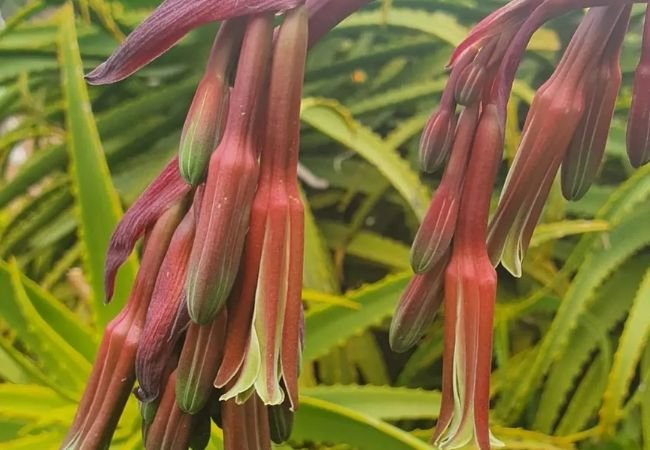



2 Comments on “10 Stunning Star Jasmine Varieties for Your Garden”